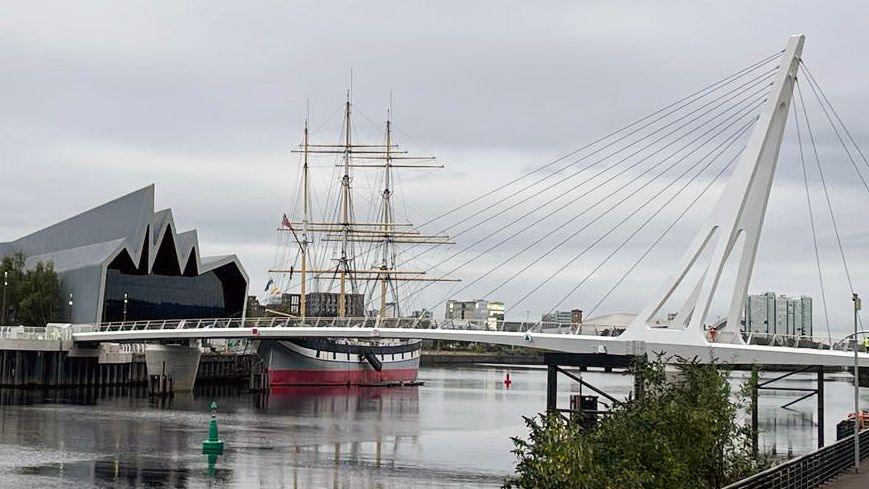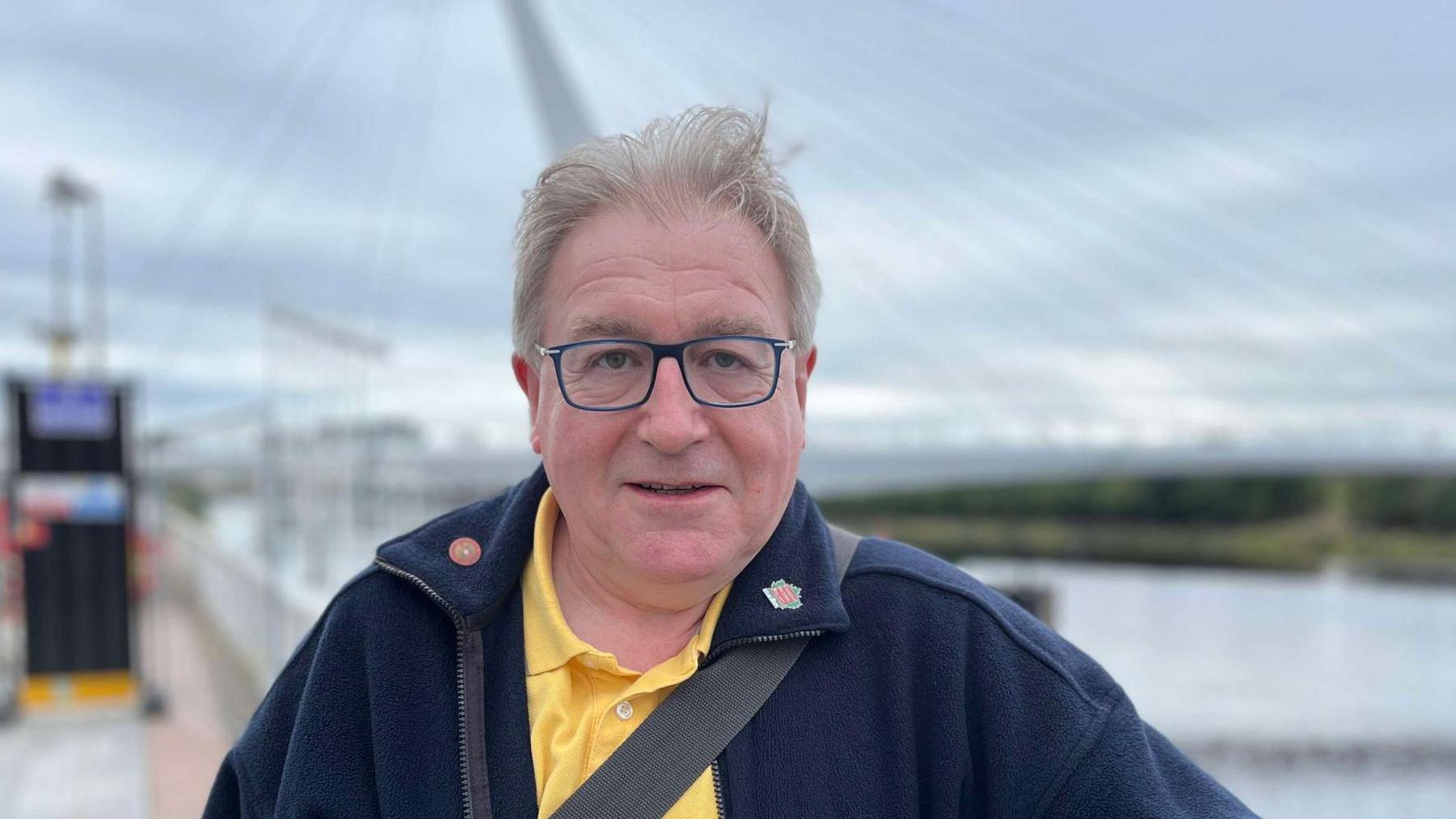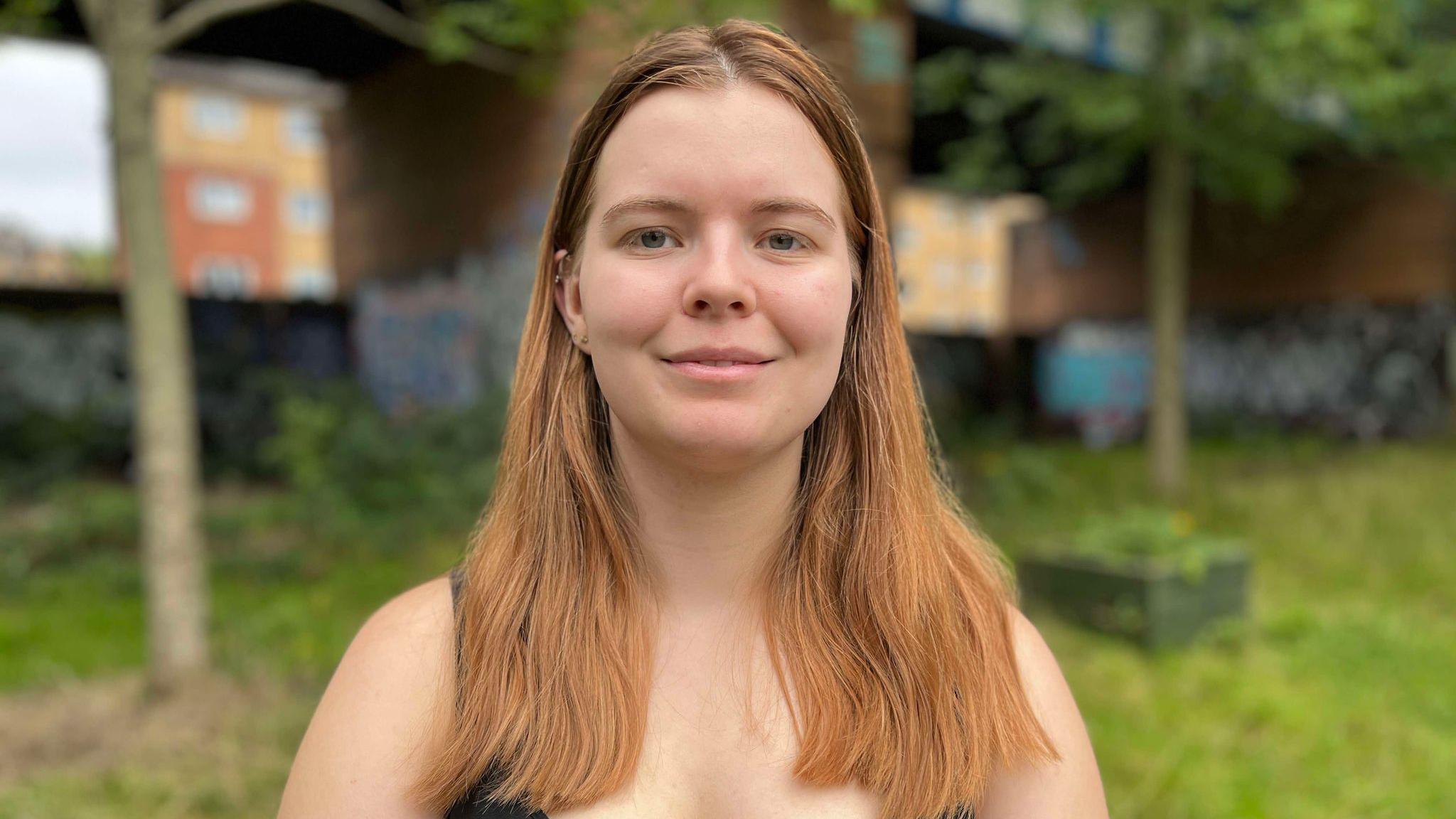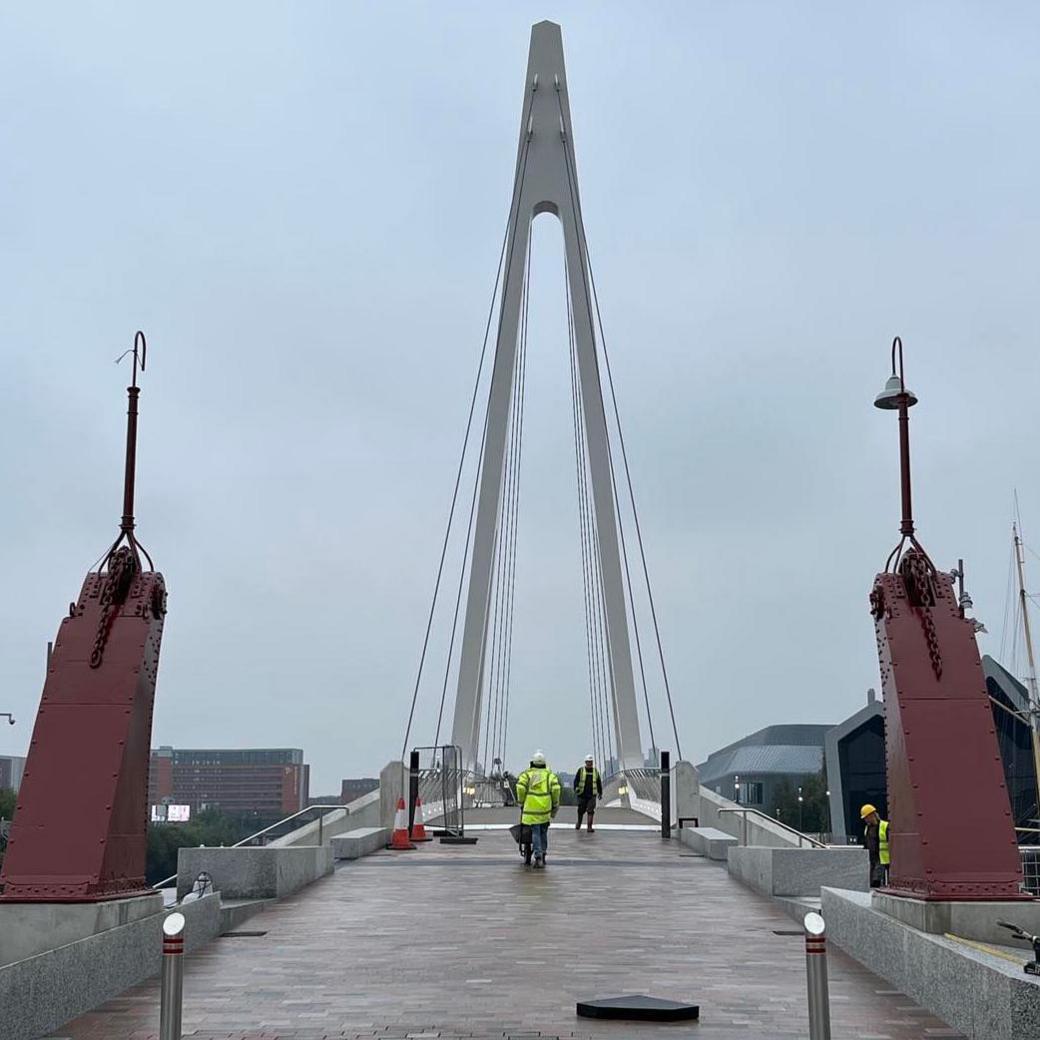New £29.5m bridge opens across the River Clyde

The Govan-Partick bridge will carry pedestrians and cyclists over the River Clyde
- Published
A new Govan-Partick bridge carrying pedestrians and cyclists over the River Clyde in Glasgow has been officially opened ahead of a weekend of celebrations.
The 377ft (115m) long bridge, which will open to allow large boats down the river, will be one of the longest opening pedestrian and cycle bridges in Europe.
Members of the public will be able to cross it from mid-morning on Saturday when a series of community festivals begins on both sides of the river.
The £29.5m project was funded by the Scottish and UK governments as part of the Glasgow City Deal.
The new bridge connects the Riverside Museum at Pointhouse Quay on the north of the river with Water Row in Govan on the south bank.
The crossing is built in two spans.
The moving part weighs 650 tonnes and is 324ft (99m) long and the fixed span weighs 45 tonnes and is 51ft (15.7m) long.
The crossing copies a historical ferry route which used to link the two sides of the river decades ago.
Both the vehicle and pedestrian ferries ceased regular operations in the 1960s, following the opening of the Clyde Tunnel further up the river.
For Kevin McCallum, growing up close to the Clyde meant he frequently used the ferries.
"When I was seven or eight years old, I remember me, my dad and sometimes my mum would go across on the vehicle ferry for free," he said.
Having this new route restored with a bridge meant a lot to him.
"We should've had it years ago. Thousands of people will use it every day," he added.

Kevin frequently used the Govan-Partick ferry as a child
Kevin is glad to see the history of the original transport link between Govan and Partick has been preserved in the new structure.
A pair of red pillars standing at the south end of the bridge used to be chained to a road ramp to the ferry that was lowered or lifted depending on the river's tide.
Glasgow University student Mari Hauge, from Norway, lives in Partick.
She said that, despite being in her final year, she had not explored the city as much as she would want.
"It is difficult to connect with other parts of the town sometimes because you need to take a bus or the subway," she said.
"This will allow me to see more of Glasgow.
"I haven't had the chance to explore Govan yet but I'm hoping it will give me some new places to go."
Mari said the bridge might also help to solve the housing issues in the west end of the city.
"It was so difficult to find housing and we really wanted it to be within walking distance (to the university), so this will offer way more opportunities for students and hopefully lower the prices as well," she said.

Mari hopes the bridge allows her to explore more of Glasgow
Clare Marshall and Deborah Love spend hours roller-skating outside the Riverside Museum.
They think the "brilliant" bridge can make Glasgow more accessible.
"It's easy to get from east to west and north to south, but getting from south to west takes ages," Clare said.
"It should be easy to get around the city."
The new link between Govan and Partick will allow everyone to get to know Glasgow in a different way, according to Deborah.
"People can walk more, for example to Kelvingrove park, and there is going to be fewer cars driving around," she said.
Clare hopes the bridge will also contribute to the regeneration of the city's riverside.
"We're on the river and we should be using the river now that Glasgow is not an industrial city anymore," she said.

Parts of the ferry-operating equipment have been turned into lamp posts
Paul MacAlindin, organiser of the Govan Footbridge Festival, told the BBC's Good Morning Scotland the bridge would help the River Clyde regeneration.
"We're going to have people from both sides of the bridge connecting and exploring each other's neighbourhoods," he said.
He added that it was a "very important chapter for Govan".
"Govan is a radically different neighbourhood to Partick and the west end," he said.
"Having those two meet physically, viscerally, on many different levels will change both sides of the Clyde."
The Footbridge Festival is planned for Saturday on the south end of the bridge, with the Clydebuilt Festival takes place on the opposite side over the weekend.
Both events are free to attend and promise an array of local bands, singers and rappers.